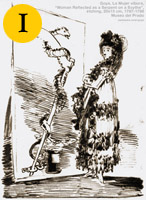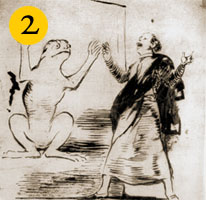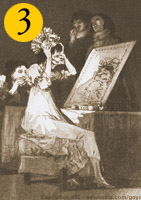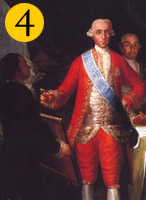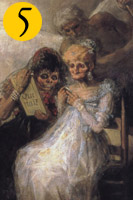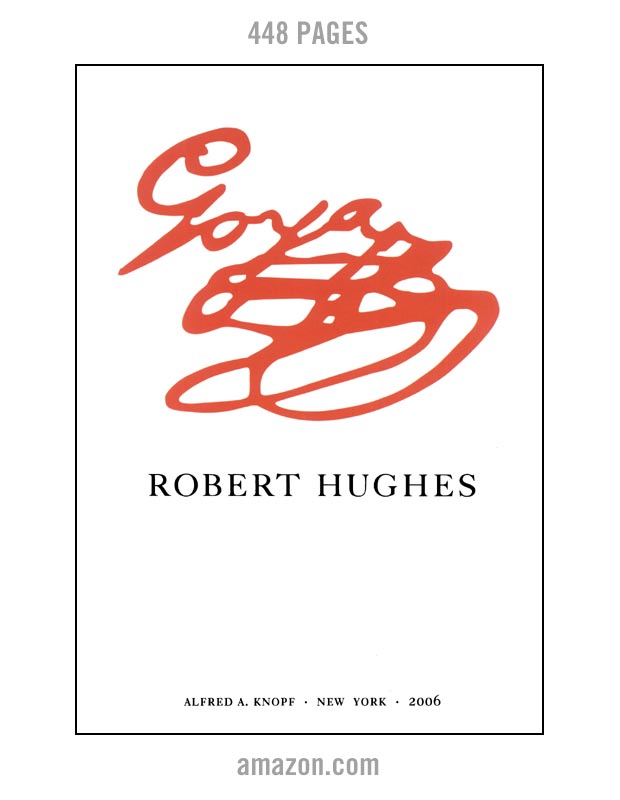Goya and Mirrors
Goya's use of mirrors in his artwork is multifaceted. First of all, the mirror is a fundamental tool of the trade of a professional portrait painter. It can be used to check compositional elements of an artwork (especially symmetry), but is also a tool by which the painter creates self-portraits, a necessary practice whereby the artist can perfect the ability to capture lighting, colors, and of course a likeness correctly, such as Goya's Self-Portrait before an Easel (6).
But Goya employs the mirror as an element of itself within his images. For example, in the portrait of Count Floridablanca (4) Goya himself is in the portrait, holding up a painting for the Count to inspect, who is also concernedly looking at the viewer, who is in the place of an apparent mirror whereby the Count is seeing himself and is probably checking the quality of the likeness Goya has painted. This is similar to the effect Goya used in the Family of Carlos IV which was painted the same year as the Floridablanca portrait. Again the viewer of the finished artwork stands in the place of a mirror into which the royal family stares at themselves. Is this simply a painterly special-effect, or a comment upon the subjects themselves, of which Goya is a member (after all, he appears as a less important member of the cast of each of these two paintings)?
In the etching Woman before a Mirror with Scythe and Serpent (1), like Frog (2), the use of the mirror is plainer. Each of these two images are judgments made by the mirror which shows the true nature of the subject. These are satirical drawings which assess something directly about the subject. Different is Las Viejas (5) (sometimes called Que Tal? or Time) which, like Caprichos plate #55 (3) uses a mirror as a prop in a morality tale, in each case the elderly person peering into the mirror cannot actually see themselves. The onlooker (such as the laughing men around the woman in Caprichos #55) and the viewer of the painting Viejas see "the truth" which is not grasped by the person actually wielding the mirror.
Goya (particularly in the Caprichos etching series) gave a great deal of thought on how to expose truth by using visual images. Certainly his own moral vision provided the judgment calls he made about how he presented a certain image, whether respectfully (such as Count Floridablanca) or with derision (such as Caprichos plate #55, which is sometimes said to be a satirical portrait of Queen Maria Luisa). In either case Goya used his intelligence to create images which required reflection on the part of the audience to understand them.
The Two Dimensions
A final element of mirrors in Goya's art is that the image in the mirror is a two-dimensional object, like a painting, or an etching, or as we would recognize it in the 21st century, the image on a cell phone or flat screen television device. The flattened image is not real, but is a copy (or version) of a living object, and the difference between the technology of a mirror and the technology of modern electronic devices functioning as a mirror in the hands of a user is negligible, or perhaps even nonexistent, moving Goya's vision of vanity into a world dominated by visuals two centuries later.
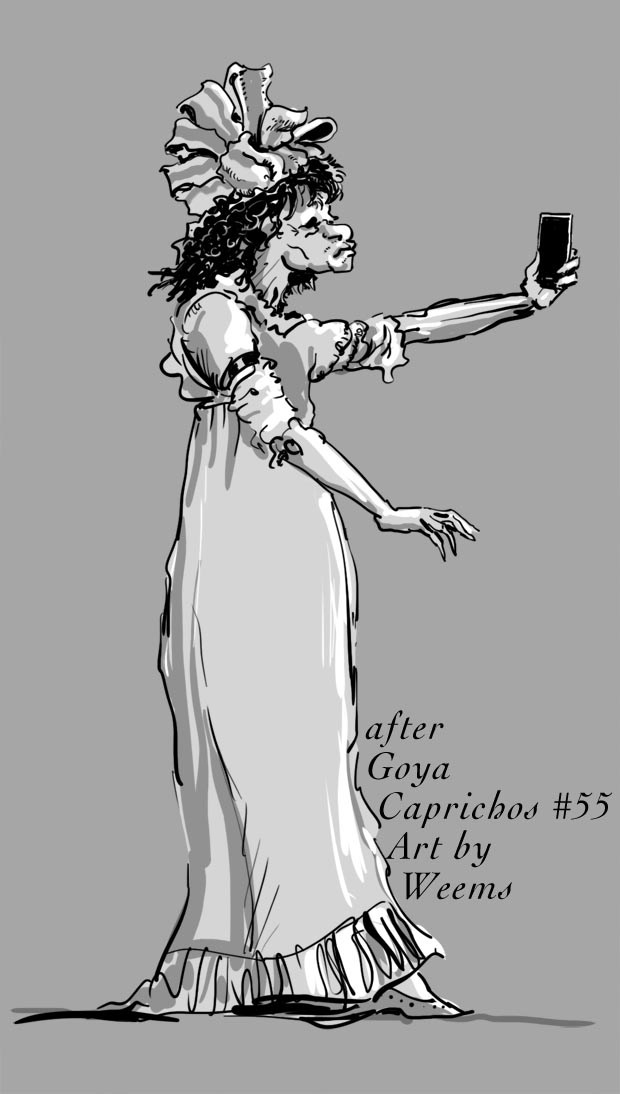
AMAZON
Goya The Terrible Sublime - Graphic Novel - (Spanish Edition) - Amazon
"From this headlong seizure of life we should not expect a calm and refined art, nor a reflective one. Yet Goya was more than a Nietzschean egoist riding roughshod over the world to assert his supermanhood. He was receptive to all shades of feeling, and it was his extreme sensitivity as well as his muscular temerity that actuated his assaults on the outrageous society of Spain." From Thomas Craven's essay on Goya from MEN OF ART (1931).
"...Loneliness has its limits, for Goya was not a prophet but a painter. If he had not been a painter his attitude to life would have found expression only in preaching or suicide." From Andre Malroux's essay in SATURN: AN ESSAY ON GOYA (1957).
"Goya is always a great artist, often a frightening one...light and shade play upon atrocious horrors." From Charles Baudelaire's essay on Goya from CURIOSITES ESTRANGERS (1842).
"[An] extraordinary mingling of hatred and compassion, despair and sardonic humour, realism and fantasy." From the foreword by Aldous Huxley to THE COMPLETE ETCHINGS OF GOYA (1962).
"His analysis in paint, chalk and ink of mass disaster and human frailty pointed to someone obsessed with the chaos of existence..." From the book on Goya by Sarah Symmons (1998).
"I cannot forgive you for admiring Goya...I find nothing in the least pleasing about his paintings or his etchings..." From a letter to (spanish) Duchess Colonna from the French writer Prosper Merimee (1869).
GOYA : Los Caprichos - Dover Edition - Amazon

